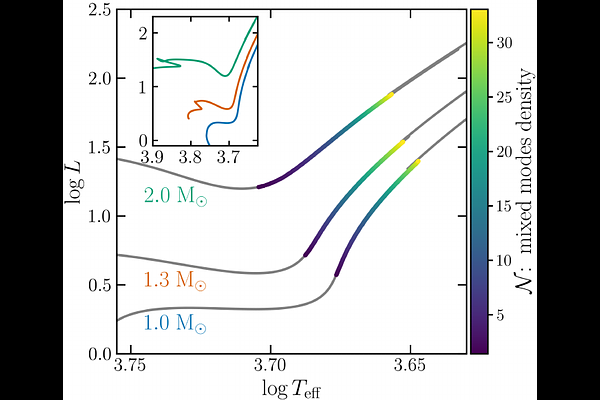The efficiency of mixed modes for angular momentum transport

The efficiency of mixed modes for angular momentum transport
Beatriz Bordadágua, Felix Ahlborn, Quentin Coppée, João P. Marques, Kévin Belkacem, Saskia Hekker
AbstractCore rotation rates of red-giant stars inferred from asteroseismic observations are substantially lower than predicted by current stellar models. This indicates the lack of an efficient angular momentum transport mechanism in radiative interiors. Mixed pressure-gravity modes are a promising candidate to extract angular momentum from the core of red giants. We focus on determining the effect of mixed modes on the rotation rates of stars evolving along the red giant branch (RGB). We developed a post-processing code that computes the angular momentum transport by meridional currents, shear-induced turbulence and mixed modes. Rotation rates were computed for models along the RGB with different stellar masses and different initial rotation profiles. We find that the mixed modes can explain some of the spin down observed in red giant stars, however, the values of non-radial mode amplitudes strongly affect the efficiency of this mechanism. Rotation rates from models neglecting radiative damping on the mixed mode amplitudes overlap with observations and produce a localised spin down around the hydrogen-burning shell, whereas the inclusion of radiative damping strongly suppresses and delays this spin down. We also show that including an additional viscosity term with values in the range $10^3-10^4$ cm$^2$s$^{-1}$ redistributes the localised spin down due to the mixed modes, enhancing their efficiency. Our results reveal that the mixed mode amplitudes need to be constraint to precisely quantify the spin down of red giant cores. Nevertheless, the mixed mode mechanism by itself cannot explain the full spread in observed core rotation rates along the RGB. This will only be possible with an additional mechanism for angular momentum transport.